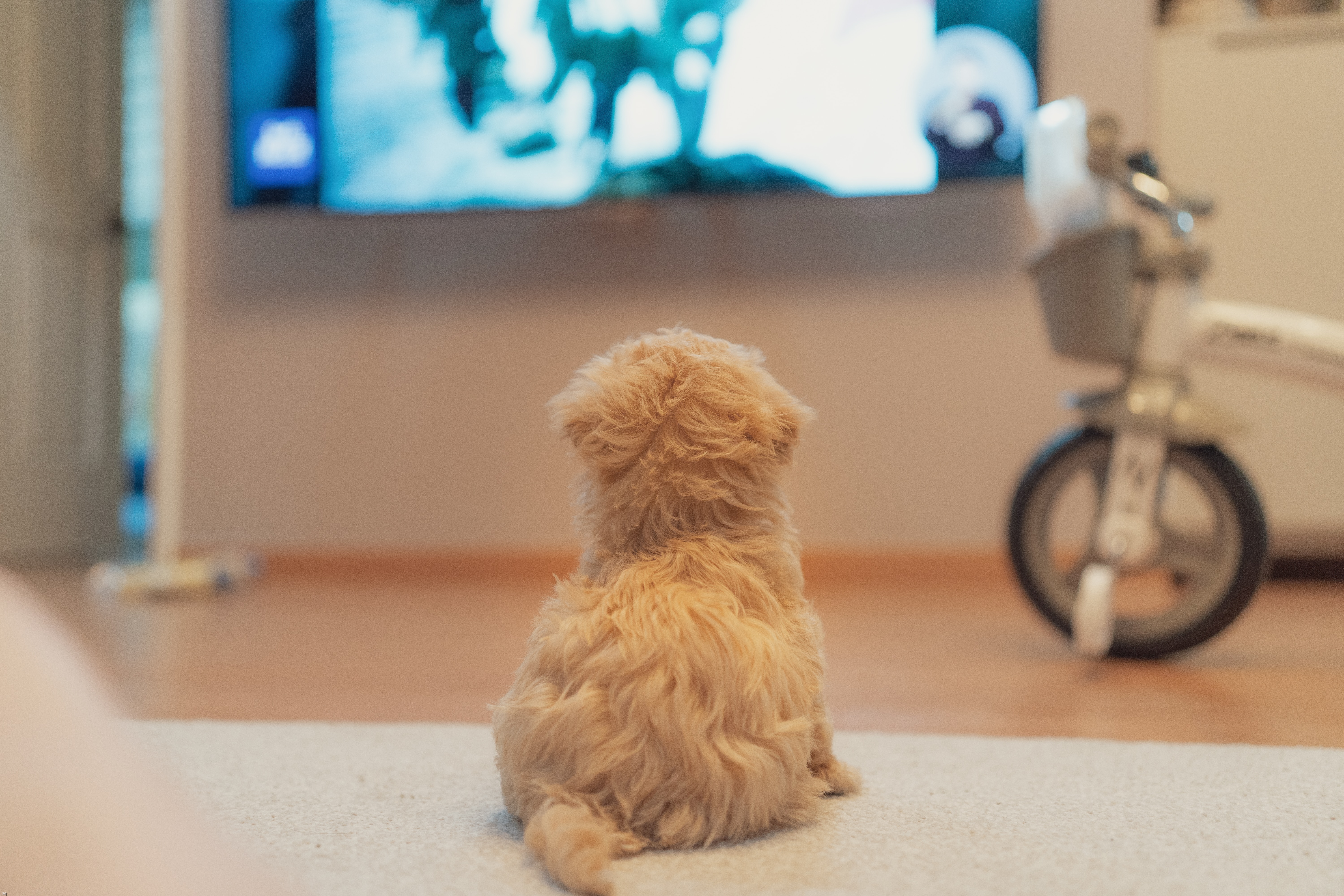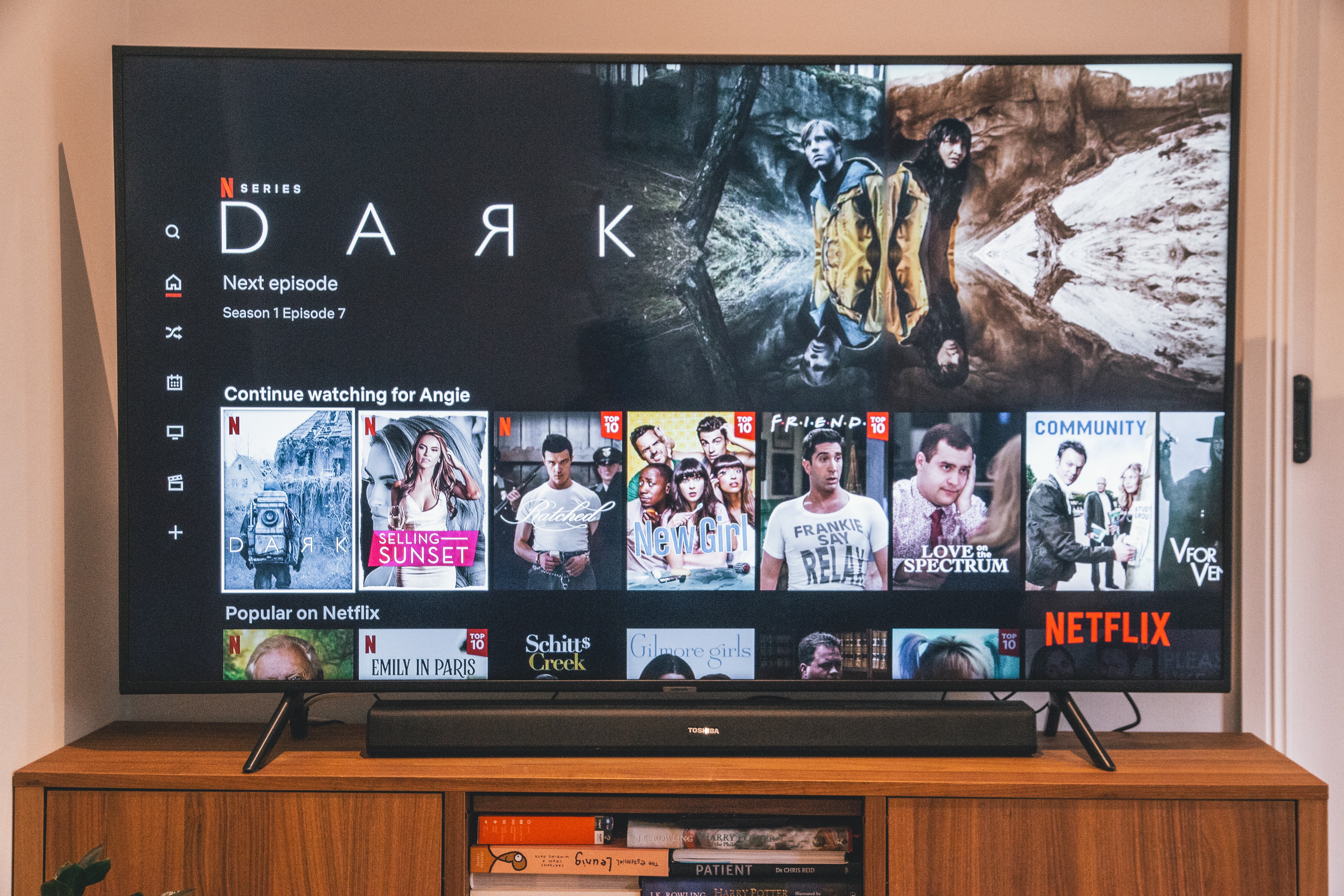In an age where screens dominate our lives, the fascination with whether our canine companions enjoy television as we do persists. Many pet owners have observed their dogs exhibiting interest in what’s on the TV screen.
But what exactly do dogs like to watch, and is there a particular show or content that appeals to their senses and interests? Unveiling these preferences involves exploring canine behavior, visual perception, and understanding their responses to various stimuli.
- Dogs enjoy TV content with animals & natural sounds.
- Contrast sensitivity allows dogs to see in low light.
- TV shows with slow scenes & music relax dogs.
Dogs, surprisingly, can enjoy watching TV! While their tastes might differ from ours, certain types of content often capture their attention. Dogs are drawn to movement and certain sounds, so programs showcasing animals, particularly those displaying movements resembling prey or activities triggering their curiosity, tend to pique their interest.
Nature documentaries featuring wildlife, with their movements and natural sounds, often captivate dogs. Additionally, shows tailored for dogs, featuring calming music and slow-moving visuals like serene landscapes, can create a relaxing atmosphere for them. Ultimately, dogs might not have preferences akin to humans, but they can find entertainment in content that aligns with their sensory and instinctual inclinations.
The information provided herein is for informational purposes only. Please refer to our disclaimer for more details..
Do Dogs watch TV?
Image credits: sq lim.
The inquiry into dogs’ interest in television begins with their visual acuity. Dogs can see images on the screen due to their ability to perceive motion and some colors.
Their vision differs from humans’, with fewer color receptors but heightened sensitivity to movement. When screens display moving images, dogs may notice and respond to them.
However, their interest and engagement levels vary among individual dogs. Some may display a keen interest, while others may remain indifferent, influenced by factors like breed tendencies and past experiences.
Understanding Canine Visual Perception
Canine visual perception is intriguing and significantly differs from human vision. Dogs possess specialized vision tailored to their needs as predators and companions. Understanding their visual abilities provides insight into how they perceive the world, including television.
Dogs’ vision is adapted for hunting and navigating their environment. Their eyes contain fewer color-detecting cones than humans, resulting in a limited color spectrum.
While dogs aren’t colorblind in the true sense, they see the world in shades of yellow, blue, and gray. This restricted color perception contrasts sharply with the vibrant color range perceived by humans.
Motion Detection and Contrast Sensitivity:
Dogs excel in detecting motion. Their eyes contain a high density of cells specialized for motion detection, enabling them to notice even subtle movements, an ability honed from their evolutionary need to track prey.
Consequently, the flickering of screens at a rate perceivable to dogs might attract their attention more readily than static images.
Contrast sensitivity, another vital aspect of canine vision, refers to their ability to distinguish between different shades of gray.
Dogs have superior contrast sensitivity compared to humans, allowing them to discern objects against various backgrounds, particularly in low-light conditions. This skill aids their ability to track movement and detect potential threats or prey.
Limitations in Visual Acuity – Dogs see things differently
Despite their remarkable motion detection and contrast sensitivity, dogs have limitations in visual acuity when compared to humans. Their eyes lack the same ability to focus sharply on objects or screens as human eyes.
Dogs possess a lower density of cones responsible for sharp vision, which affects their ability to perceive fine details. As a result, they might not sustain interest in certain types of content that rely on intricate visual details, such as intricate patterns or fast-paced scenes with rapid changes.
Television and Canine Perception:
When dogs watch TV, their responses are primarily triggered by movement and certain sounds rather than the finer visual details. Dogs can recognize the flickering images on the screen, especially those showcasing movements resembling prey or other animals.
For example dog will likely bark seeing other dogs or animals on tv like squirrel. However, the inability to focus sharply might limit their sustained interest, particularly in content heavily reliant on detailed visual information.
What TV shows do dogs like?
Image credits: Marques Kaspbrak.
Understanding a dog’s preferences on television involves recognizing what stimulates their senses. Research suggests that dogs show more interest in programs or videos that contain other animals, especially those displaying movements similar to their natural prey.
Documentaries featuring wildlife or nature scenes like Animal Planet or National Geographic often catch a dog’s attention due to the presence of animals, movements, and natural sounds.
Additionally, dogs might react more enthusiastically to content with high-pitched sounds or specific frequencies that align with their hearing range. So if your pup makes barking sounds when in front of the tv isn’t necessarily an alarming situation.
The Most Relaxing TV Show for Dogs
Identifying the most relaxing TV show for dogs requires considering factors that promote a calming effect. Canine behavioral experts suggest that shows or videos designed explicitly for dogs, featuring soothing music, gentle sounds, and slow-moving images, tend to relax them.
Programs with tranquil scenes, such as landscapes, peaceful environments, or even slow-motion visuals of animals, can create a calming atmosphere for dogs. If you’re watching similar kind of tv shows, notice your dog will enjoy it too.
The Best Thing for Dogs to Watch on TV
When choosing TV content for dogs, understanding their instincts and preferences is key for pet parents enjoying TV with their dog. Dogs enjoy television, but they don’t see it as real. Their preference for certain shows may be due to their fascination with moving objects, resembling prey animals or triggering their curiosity.
Opting for content displaying non-threatening animal interactions, including other dogs, alongside engaging visuals and sounds, grabs a dog’s attention. Recognizing that dogs enjoy TV in a different way, favoring shows with movements or visuals that match their natural inclinations, enhances their viewing experience while bonding with their pet parents.
Understanding how dogs see TV is like unlocking a secret world. They don’t see colors as bright as we do, but they’re sensitive to motion and shapes. Their vision helps them track things easily, which comes from their days as hunters. So, when they watch TV, they really like shows with animals or things that move like they’re hunting.
But there’s a catch – dogs can’t focus on small details like we can. So, while they might find some shows interesting at first, they might get bored if there’s too much going on. Like watching other dogs but dogs don’t notice tiny ball that dogs are playing with on the tvs.
Knowing this helps us choose better shows for our furry friends. Picking programs with animals or slow-moving scenes and relaxing music can make TV time more enjoyable for them. It’s kind of like picking their favorite toy or treat – we’re making their time with us more fun and interesting.
Thinking about how dogs watch TV also teaches us something cool about their world. They might not see colors as vividly, but they see movement in a special way. It’s like they’re living in a world where movement is super important. Understanding this helps us appreciate their world a bit more and make their TV time as awesome as possible.
So, the next time you’re hanging out watching tv with your dog, consider picking a show that matches their way of seeing things and love to watch. It might just make their tail wag a little more and their time with you even better. It’s all about giving them the best experiences we can, even in something as simple as watching a favorite TV show together.
486views
Share on Facebook
 Dark Mode
Dark Mode 

 No fees, cancel anytime
No fees, cancel anytime 




















































-4
0